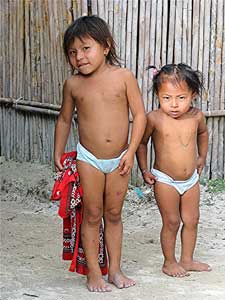Review: Islands Beyond the Horizon
The Life of Twenty of the World’s Most Remote Islands
By Elle Rahilly

In Islands Beyond the Horizon, author Roger Lovegrove takes us only where our imaginations have travelled, while opening our eyes to the rich biodiversity, human activity, natural beauty and indigenous culture of each remote island. From the arctic to the equator, the author paints a vivid scene of islands such as Halfmoon Island, St. Kilda, and the Solovetski Islands.
In each account, he sets a backdrop to each island by describing the rich history and natural resources of each location, following with the impact which human activity has played on each remote place.
In one of his twenty chapters, Robert Lovegrove travels with his audience to the San Blas Islands-a unique myriad of islands set right off the Caribbean coast of Panama. In the text Lovegrove paints a vivid scene of an archipelago enriched with a tropical climate, rich aquatic life, quaint man-made huts which line the seashore, along with a bustling small community that seems remarkably in sync with its natural habitat.
Perhaps what is most incredible in his account of the San Blas Islands is his description of the indigenous people—a population who has maintained their own language, religious practices and beliefs, and societal norms by dodging the influence of westernization.
Between his remarks on the plentiful wildlife, close proximity to the equator, and the charm of the people, Roger Lovegrove provides for the audience a rich depiction of an untouched island, venturing where few have ever known of.
Roger Lovegrove attributes his passion for travel to his parents, sending him on his first trip at the young age of sixteen to Skokholm Island off the Pembrokeshire coast of West Wales, which inspired his travel to several more remote islands in the years that followed.
He was Director of the Royal Society for the Protection of Birds in Wales for 27 years and since retirement has been a member of the board of The Countryside Council for Wales. He is the author of some ten books, including Birds of Wales, The Red Kite’s Tale, and most recently Silent Fields.
Excerpt from the book:
San Blas Islands
The San Blas Islands lie just offshore from the Caribbean coast of Panama, some hundred miles or so east of the Canal, towards the Colombian border. The archipelago is a myriad of islands scattered like stardust along the Panamanian coastline. They are, of course, tropical islands, only 9° north of the equator and are hot and humid most of the year. With their low sea-level profiles they are dangerously pregnable to inundation, lying on the crystal surface of the Caribbean, no more than 3 or 4 feet (1-1.2 m) above the ocean’s tideline, completely flat and unprotected from the sea. Fortunately they are tucked into a corner of the Caribbean where hurricanes are least frequent.
Most of the islands are tiny, frequently less than 2.4 acres (1 hectare) in size, and although there are almost 400 of them, fewer than fifty are inhabited. Those that are, are often packed with humanity. The universal bohios (palm-leaved, thatched huts) are cheek by jowl with each other, right to the water’s edge where they are often linked to each other by narrow planks across inlets and creeks. The waterside is the centre of activity with a bustling confusion of small boats, dugouts, children swimming, fisherman sorting their catch, and women washing utensils or clothes.
The shallow seas surrounding many of the islands contain classic coral reefs—some of the oldest in the world—and the clear waters of the reef support kaleidoscopic colonies of corals, tropical fish, turtles, tunicates, sea urchins, sponges, crustaceans, and sharks; often in the shallowest parts, the underwater world of dazzling colour and movement is easily visible from the sides of a boat.
The communities of fish are spectacularly colourful, with parrot fish, groupers, jackfish, damsel fish, clownfish, butterfly fish, and many others. Fishing, together with the harvest of coconuts, is a central element of the island’s subsistence and economy and many of the native fishermen still fish the offshore waters in dugout canoes (cayuco) in exactly the way that their forebears have done for timeless generations. However, even in this seeming paradise, all is not well.
As elsewhere in the Caribbean, driven by increasing human numbers, man no longer lives in perfect harmony with the resources of the sea. Through overexploitation, many of the Caribbean populations of fish are now depleted, the two principal species of sea turtles which breed on these coasts, green turtle and hawksbill, are bordering on extinction and the reefs themselves are suffering serious damage from the effects of climate change, pollution and, in some places, increased sedimentation.

Thankfully, although these are concerns on the San Blas Islands, the problems are not as serious around this area of the Panamanian coast as in most other areas of the Caribbean. The autonomous San Blas islanders protect their marine environment jealously, for example by banning all scuba diving.
These scattered islands are tropical treasures, their skies graced by elegant and familiar birds that are characteristic of such places. The magnificent frigatebird does not breed here, but is common in the area, circling overhead on long narrow wings and deeply forked tail, with the consummate ease of the supreme flier that it is.
It is a fisherman but also a pirate, robbing other birds such as the brown boobies and masked boobies, both of which are also numerous here. Everything about the boobies is sharp and angular—wings, wedge-shaped tails, and long pointed bills—and they are the ultimate high divers, plunging Exocet-like from 40 or 50 feet (12-15 m) into the water to take fish from well below the surface.
Occasional black vultures, numerous all over this part of the Americas, cruise overhead, drifting out from the nearby mainland, silent, motionless on the wing and vaguely disconcerting. The only gulls that occur around the islands are laughing gulls, abundant winter visitors from North America, here in springtime starting to make their way north.
Like the frigatebirds, they are not averse to robbery and will harass the brown pelicans, even to the extreme of comically trying to perch on the larger birds in an attempt to get them to disgorge their catch.
The sandy beaches on the quieter islands are used as resting and refuelling stops by a great variety of shorebirds that coast along this sea-board on their great seasonal movements between the two continents, although numbers are not as great here as on the Pacific coast. In April the most evident wading birds are whimbrel, willets, and semi-palmated plovers.
The first two are long-distance travellers, heading for breeding areas far north in America and Canada. The willets are sturdy, dull grey-brown waders when seen on the shoreline, but are suddenly transformed in flight, showing bold, broad white wing stripes, black wing tips, and white rumps, announcing themselves with a strident ‘kip.kip,kip’ call.
I don’t remember the name of the island I first landed on, one particularly bright April morning—nor indeed whether I ever knew it—but it was one of a scatter of virtually identical islets, dotted across the sea, palm-clothes and with strand lines of dazzling white sand. Apart from the fifty or so of the islands that are inhabited, all the others are owned and the valuable coconut palms growing on them are carefully guarded.
Mirror Image Islands
Each island is a mirror image of the next, except that the one I was on clearly supported a populous and thriving local community. We drew our boat up alongside a rickety wooden jetty, crowded with beaming, excitable Indian children, some of whom, either by design or by being pushed, plunged down into the water and swam around us.
The uncertain decking on the jetty trembled and moved as we walked on it, resulting in the whole edifice swaying disconcertingly. Apart from the worrying number of people on such an unstable structure, the only building it supported was a very small, wooden, long-drop dunny. It was far from private, gap-sided so that inquisitive children could readily smile at the occupant inside and offer helpful leaves through the gaps. As embarrassing, was the fact that the long drop into the sea was directly above the favourite place under the jetty where the other children splashed and wrestled.
At the head of the jetty, more of the people were gathered in front of the thatched-roof huts. These are the Cuna Indians, one of the purest aboriginal races now left on the earth. The population of the islands is around 20,000 with the remainder of their tribe living in their original homeland along riverside villages in the mountains of eastern Panama.

The people are a fine looking race, friendly and happy folk, full of charm. They have their own language—Cuna—and are one of the best organized native groups in Central or South America. They maintain their old religion, closely related to their medicinal beliefs and serviced by seers and medicine-men and to date they have successfully resisted the blandishment of European missionaries. The San Blas Cuna gained autonomy from the Panamanian Government in the 1920s and have sovereignty over their affairs through an Islands Congress.
They are a contented people of agriculturalists and fishermen. Most of the original vegetation of the islands has been long cleared and crops of yucca, maize, rice, and cocoa are grown as well as the ubiquitous coconuts. One of the problems is that there is no fresh water on the islands, leaving the inhabitants reliant on regular supplies from the mainland. Principally, however, the Cuna are fishermen, reaping a ready harvest of seafood from the shallow crystal waters and coral reefs around the islands.
They are tiny people, the second smallest in the world after the Pygmies and, over the generations, in the face of spreading westernization, they have assiduously protected their heritage, culture, and way of life. There is nowhere that I have ever been where there is such a sensation of stepping back in time when coming amongst them; there is a very special essence for, despite was goes on around them, they are still so far essentially untouched by the rest of the world.
Although many of the men have adopted western shorts and T-shirts, the women are resplendent, in bright multi-coloured dresses and blouses and bedecked in traditional nose rings and pendulous ear rings, many of the older ones displaying wrists and ankles heavy with bangles of gold. They are amongst the most colorful of all native peoples and famous for the magnificent textiles that the women produce and sell in volumes to eager visitors.
Examples of their work are hung outside all the huts along the paths among the palm trees. These craftswomen are world famous for the superb cotton ‘molas’ which they work in reverse appliqué and make into blouses and dresses, but they also produce glorious appliqué ‘San Blas T-shirts’ and similar with vibrant technicolour motifs of parrots, macaws, toucans, humming birds, turtles, and other creatures among which they live, emphasizing the bond with the wildlife that share the islands with them.
All over the village, the women sit in the sunlight outside the huts working on the appliqués. Some grin broadly as we pass and point encouragingly to the textile masterpieces hanging behind them whilst some of the younger ones smile shyly and turn their eyes down.
Elle Rahilly is an editorial assistant for GoNOMAD.com and a student at the University of Massachusetts in Amherst.
Buy this book on Amazon:Islands Beyond the Horizon: The Life of Twenty of the World’s Most Remote Places
- Saudi Arabia Might Be Your Next Getaway Spot - April 23, 2024
- Mongolia, the Land of Eternal Blue Sky - April 20, 2024
- These 9 U.S. National Parks Require Reservations in 2024 - April 17, 2024

